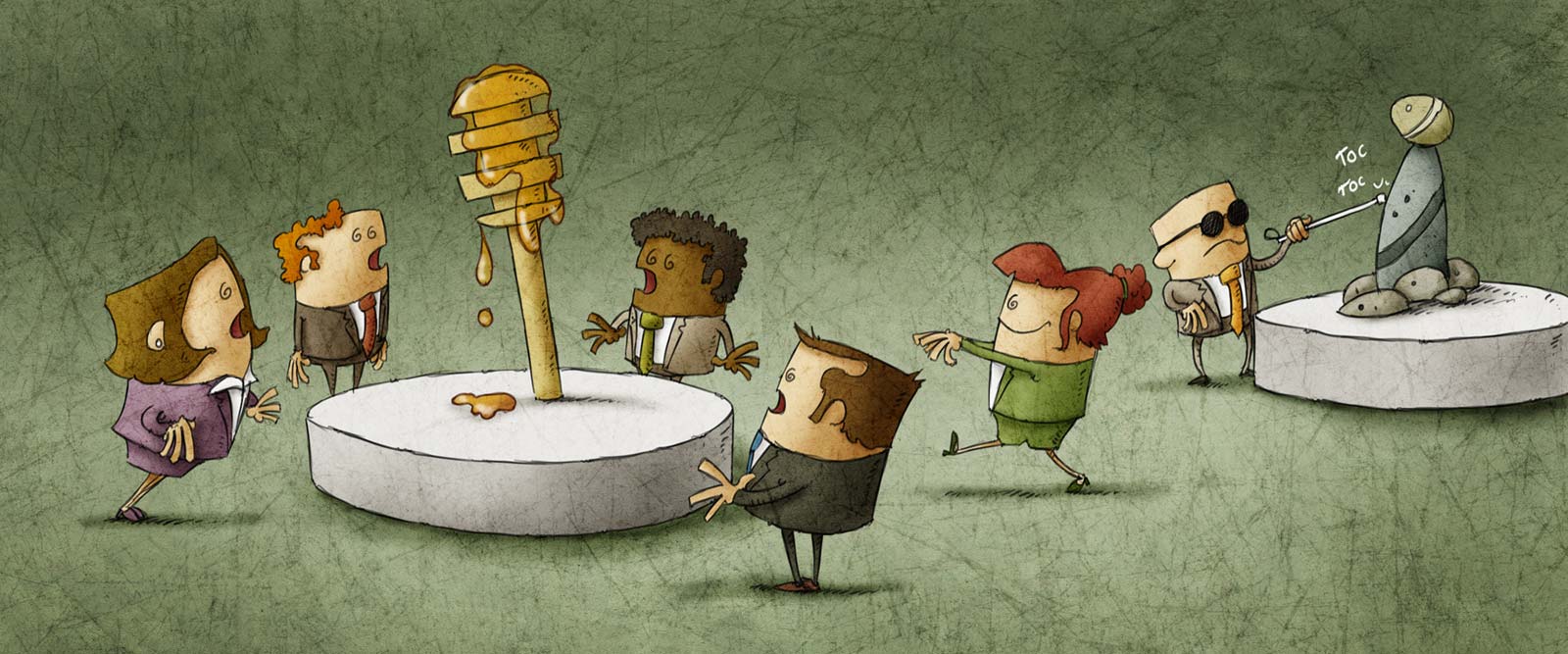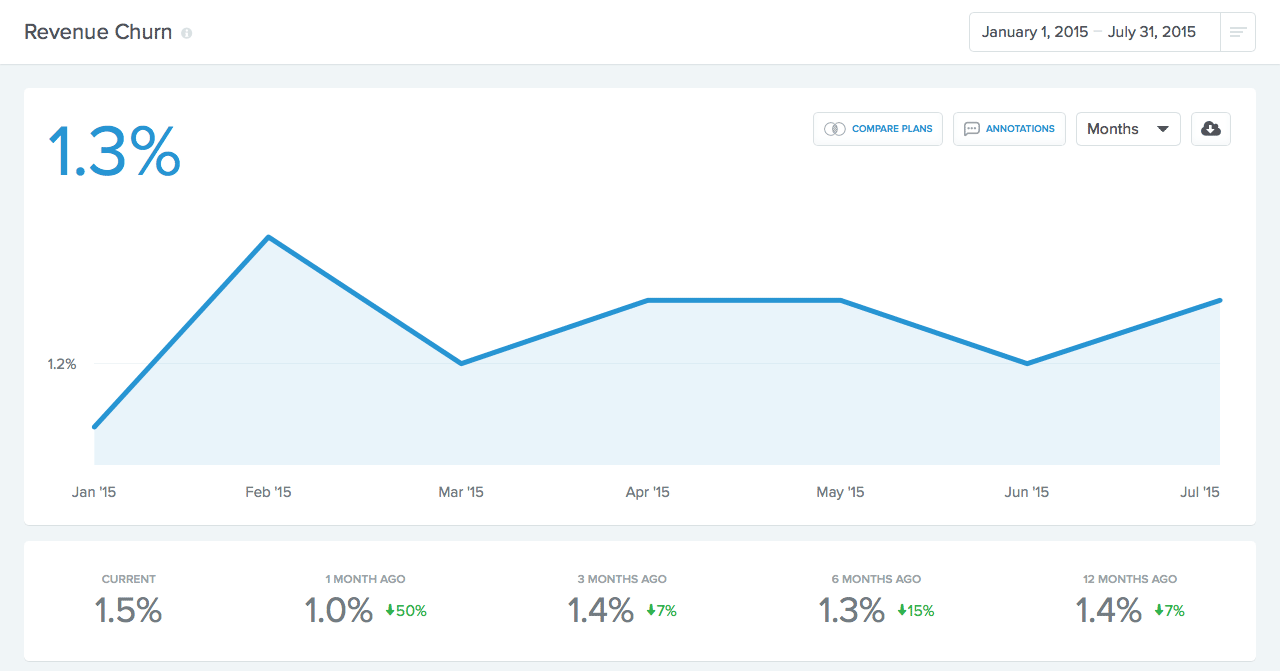Table of Contents

Churn is the silent killer of growth. It’s the sieve that keeps your business from taking off. It’s the reason growing a SaaS company can be such a slog. Few people realize how dramatically just a few extra percentage points of churn can affect your startup over the course of a year or two.
Take the following example. Company X is currently doing $100,000 MRR with a monthly growth rate of 6% (they add 10% and churn 4% every month). At this rate, in twelve months they will have roughly doubled to $201,000 MRR (100,000 × 1.06^12).
How would growth be affected if they could reduce churn from 4% to 2%? That would give them a MoM growth rate of 8% instead of 6%. It may not seem like a huge increase, but with an 8% growth rate, a company who started at $100,000 MRR would grow to $251,000 (100,000 × 1.08^12) over the course of a year instead of $201,000.
They would add $150,000 MRR instead of $100,000 MRR (50% more) over the same time frame, giving them over $500,000 in additional annual revenue!
Given this information, it’s a wonder that more growth hackers don’t see reducing churn as one of their biggest growth opportunities. Too many people in the startup community are so focused on getting new customers in the door that they don’t realize how many of them are going right out the back.
Churn At StatusPage.io
I would be lying if I said we, at StatusPage.io, weren’t pretty blessed in the churn department. There hasn’t been a single multi-month period in which we’ve averaged more than 3% churn.
We’re proud to say that in the past eight months, we’ve averaged 1% monthly churn. Not to toot our own horn (toot toot!), but a 1% monthly churn rate is pretty incredible for a startup of our size and age.

The folks at Baremetrics ran some numbers for me and across 150 customers who were doing at least $350K annual recurring revenue, the average churn rate was 13%.
Assuming those people make up a representative sample of the startup community, that means StatusPage.io has a churn rate 1,000% lower than the average startup.
Since lowering churn by just a few percentage points can have such a profound effect on the growth of other startups, we’re sharing our story on how we got here so that you can apply some of these lessons to your business.
Make something people want
Were we brainwashed during our time at YCombinator? Probably a little bit. But that doesn’t make Paul Graham’s advice any less true. When you make something people actually, legitimately want, it seems to make every problem go away, including churn.
A more precise way of saying this is make something that continuously delivers value. This means from the day they sign up for your product, and every day after that, you keep delivering your value proposition.
Sometimes a high churn rate is a sign of poor execution, but even the best execution on a product that doesn’t solve a real problem will eventually fail. Be honest with yourself.
Redefine your onboarding process relentlessly
The most talked about benefit of a good onboarding process is that it converts free trialers to paying customers. But that’s not the only benefit to take into consideration. A good onboarding process can dramatically improve your churn.
A good onboarding process quickly and effectively helps your new signups realize the value of your product. Contrary to popular belief, onboarding doesn’t “stop” after the user’s first time interacting with your product. It goes on for weeks or even months, continuing to educate and nudge the user into benefitting from using your product, continuously helping them get more invested.
It’s simple, customers who are getting more value out of your product are going to be less likely to churn.
So how do you improve your onboarding process? There are a few specific onboarding hacks that we implemented:
- Usability testing
- A set-up wizard
- Knowledge base
- Better empty states
- 24/7 live chat (or close to it)
- User segmentation (person who signs up vs. their colleague)
- Design for the novice, configure for the pro
Focus heavily on making the product great
A great product is at the heart of a low churn rate. Since StatusPage.io was founded (about 2.5 years ago), 2 out of 3 founders have spent the majority of their time working on the product. Implementing new features and improving existing ones has been our top priority since day one.
You could argue that our growth might have been faster had we invested more time and resources into marketing, but we’re in a position to really step on the gas pedal now that we’re retaining customers extremely well.
But how do you know what production additions and tweaks need to be made?
Talk to your customers
I can’t say this enough: talk to your customers constantly.
What if your product isn’t providing enough value? Keep talking to your customers, they’ll tell you why. At some level, you just need to have enough correct intuition to know that the pain your product is solving is real. Assuming that’s the case, your customers will help iron out the kinks.
I say “talk” to your customers but I mean “listen.”
Make everyone do customer support
When the decision makers and product builders are the ones who are doing support, you create a really valuable feedback loop.
When a support rep hears about a minor bug for the third time, the bug gets turned into a ticket. That ticket then gets tossed down into an endless pit of despair, which is where that ticket while die. It will languish for months waiting to get “prioritized”.
When an engineer hears about a bug for the third time, she promptly stops what she’s doing to fix the bug. It’s just the nature of engineers. It’s in their DNA.
It also turns out that when the people who build the product are directly exposed to customers, design quality increases pretty significantly. Imagine that.
Avoid bloat
Feature creep is something we’ve had to make a conscious effort to avoid over the past few years. As technical founders, our inclination is to Build All The Things™. Engineers always want to build—you have to fight that natural tendency. It’s better to refine and hone your core feature set than it is to add a feature that’s will only be used by a small subset of your user base.
There are so many reasons why it might sound like a good idea to build that random feature, but it’s rarely going to impact your business.
Make your customers like you
Business is personal, and your relationships with your customers matter. People are more likely to buy from your company if they like you and have a relationship with you. I can think of a number of products we’re using at StatusPage.io simply because we liked the founders.
There are lots of things you can do to make people like you and feel like they have a personal relationship with you.
There are quite a few ways we interact with our customers (outside of the product itself) that contribute to a great user experience:
- Thank them for being a customer
- Proactively live chat with them
- Talk to them on Twitter
- Reward the super fans
- Blog about your experience building a company
- Open source the things you build
- Give talks at conferences
- Create free mini-sites that help them accomplish something
- Provide awesome support
- Be humble in your screw ups
At the end of the day, the best way to make people like you is by engaging with them and treating them like humans. Make them feel special. Show them you care.
If you do these things, people will want to become your customer simply because they want to support your cause.
Make your product sticky
Sticky products are those that are just hard to quit once you’ve started using them. Yes, making a product that solves a deep burning pain and making your customers like you will make you sticky, but there are a few things in particular you can do to keep your customers attached.
Integrate with the other products your customers use
A new feature that I’ll rarely tell you not to build is an integration with another company that many of your customers already use. Integrating with other products is a way to extend the value you deliver and sink your roots deeper into your customer’s daily workflow.
When your customer considers canceling their account, they will have to consider the fact that several of the products they use will go down in value. They may be able to wholesale replace you with a competitor if that competitor also has similar integrations with your partners. But even then, the customer will have to weigh the costs of switching against the value. And when you’re entrenched in several products that they use, that cost of switching can be pretty high.
Cozy up to your customer’s customers
If the ultimate end-users of your product are actually your customer’s customers, you’re in a good position. I’ll use our product as an example: our customers use our product to provide an additional benefit to their users. If they were to stop using our service, they would essentially be taking away a “gift” that was given to them.
Remember, there are no silver bullets
My example earlier told a story about how you could increase your growth by 50% by reducing churn by a few percentage points. The reality is, reducing churn from 4% to 2% is no small task…you’d have to cut your churn in half!
Making matters worse, churn is a lagging indicator that customers aren’t happy. It’s a truck that takes you by surprise and blind-sides you. It’s a hole that can take you months or years to dig yourself out of.
That big bullet list of things you can do to make people like you is great and all, but it will take you a long time to implement and fine-tune so that it works for your company.
Churn is one of those things that can’t be solved by a single silver bullet…it takes a lot of lead bullets. It will take everything you and your team have to make an incredible product that solves a deep burning pain for people and that people love.
But with a concerted effort to make something people want, a great onboarding process, a great product, and making people like you, you too can take your growth to a new level by reducing churn!


